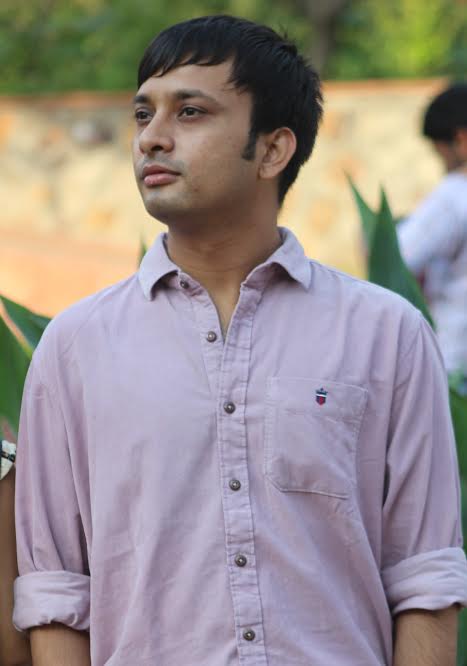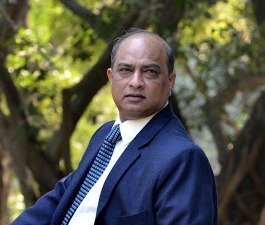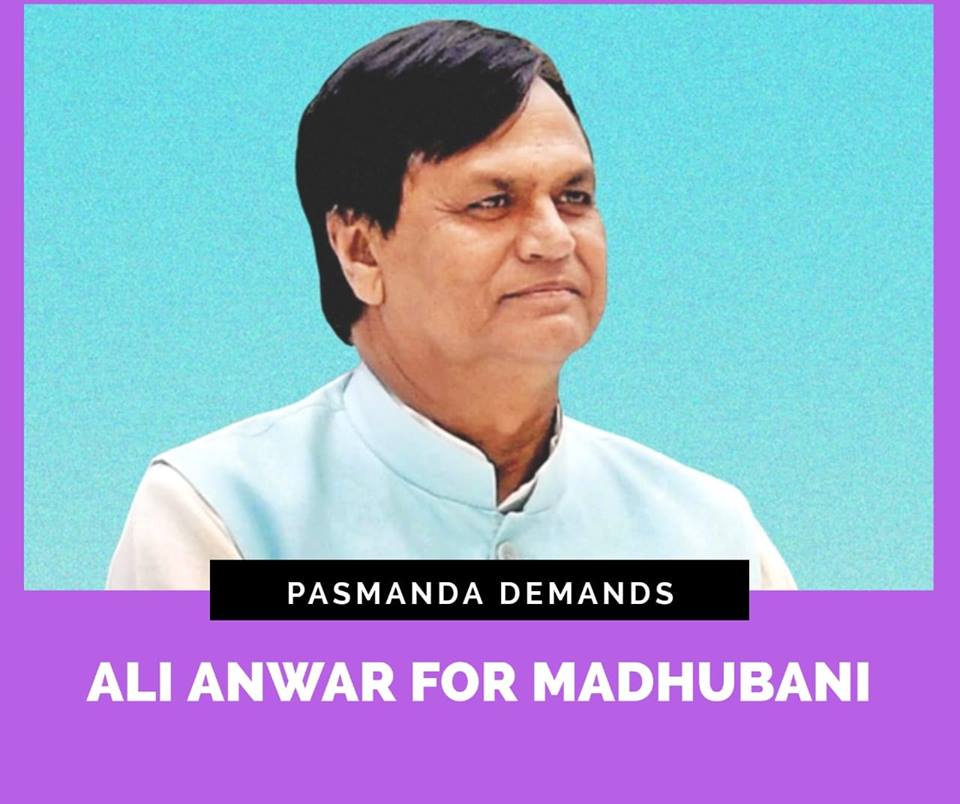Pushpendra Johar
 In September 2015, a close friend who is from Kashmir was debating the outcome of the recent recruitments of young Kashmiris in local militant organizations like Hizb-ul-Mujahideen. The discussion was in the light of the history of early days of militancy and their culmination in the late 1990s. He concluded that it will help recruit some people and will also get them killed but won’t bring back heydays of militancy as was the case in early 1990s, for the growing middle class doesn’t want to repeat the same chapter considering that there is no surety of returns as far as militancy is concerned. According to him, the Indian state has been ‘managing’ Kashmir very well. I asked him the same question recently and he told me how he was trying to dissuade a colleague’s son from joining militancy.
In September 2015, a close friend who is from Kashmir was debating the outcome of the recent recruitments of young Kashmiris in local militant organizations like Hizb-ul-Mujahideen. The discussion was in the light of the history of early days of militancy and their culmination in the late 1990s. He concluded that it will help recruit some people and will also get them killed but won’t bring back heydays of militancy as was the case in early 1990s, for the growing middle class doesn’t want to repeat the same chapter considering that there is no surety of returns as far as militancy is concerned. According to him, the Indian state has been ‘managing’ Kashmir very well. I asked him the same question recently and he told me how he was trying to dissuade a colleague’s son from joining militancy.
A few days after this conversation with my friend last year, I travelled to Nowhatta in downtown Srinagar (also known as Shehr-i-khaas) to interview young people on the rising militancy and how they perceived it. Burhan Wani, the much-celebrated Hizb-ul-Mujahideen area commander was one of the few I had been reading about for the past year and a half. I would go through newspaper articles published locally and talk to Kashmiris across demographics about their views on him and his colleagues. I chose that particular locality for it was there that just a week prior to my visit, a huge portrait of the area commander Burhan Muzaffer Wani appeared on a Mosque wall.
According to local newspapers1, it had unsettled the security agencies who were scrambling around to find out the perpetrators of this rather audacious act. The area was calmer than it would be on a Friday, a day otherwise known for protests and stone-pelting. I had gone with a Kashmiri person whose family had been helping me in my research in Kashmir. As we tried approaching a couple of young men, they seemed oblivious to the questions asked, most likely a conscious choice on their part. People were not just hesitant but also doubtful of our identities and motives. We could have been police informers or government spies and there was a possibility that we would be in trouble had we asked more questions to people. Soon we got a call from the family I was staying with, to return immediately for there was a possibility of getting roughed up if we raised more suspicion around. The visit didn’t solve the purpose I had gone for, but it did lead to more ideas. It could either mean that I had faltered methodologically, or the opacity in between could be read differently. The impermeability was suggestive of the solidarity, of caution and of the distrust as a safeguarding tool.
Burhan Wani: poster boy to martyr
Over a month ago, on the third day of Eid-ul-Fitr, we were travelling in a friend’s car from Srinagar to Panahpora* in Budgam district. Right after the Rambagh Bridge we stopped to buy fire crackers for 7 year old Zeeshan and his younger cousin Saba*. Both the children were from the family I was staying with in Kashmir. When I came back to the car my friend showed me a facebook update on his mobile phone which read ‘Hizb-ul-Mujahideen commander Burhan Wani shot down’. It was accompanied with a picture of the slain Wani. My heart froze!
Later that evening when we were carefully treading the by lanes of Srinagar to get to Budgam, the streets had seemed visibly perturbed. From Rambagh we moved towards Hyderpora and took a right turn at Humhama. As we were approaching Ompura market it was difficult to tell in advance that the road was blocked by boulders and bricks right at the left turn towards Budgam town. As we moved further we could see a group of about 30-40 young boys standing there with their faces half covered and their hands clasping stones and bricks. All that one could see were their agitated eyes assessing everything that passed by. Our car had a non-JK registration number. They didn’t stop us; rather let the car pass through a narrow opening on the right side of the road. Both the kids sitting at the back of the car were oblivious to what we had just passed. Right at that moment I had a nervous hunch about what was going to unravel in the days to come.
Disciplining, Emasculation or ‘Integration’: Forms of Violence
What does it mean for the militants to fight this war which may not assure them much, considering the fact that they are fighting against an entire army supposedly guarding the biggest democracy in the world? But these questions seem rather meaningless for their concerns differ from both academic and objective anxieties. Theirs, as it seems, are rather existential in nature where they seek the meaning and worth of life away from the daily humiliation at the hands of uniformed men who try to discipline them in ways which aren’t in agreement with the imagined selves of these young men. The workings of armed forces in Kashmir involve detaining and questioning young men almost on daily basis. These young men most often happen to be the same people who, as an act of resistance, throw stones at armed forces and at other symbols of the Indian state in the valley.
Burhan Muzaffer Wani’s was a similar case where he refused to go ahead with that process of disciplining. When a bunch of CRPF soldiers asked him and his brother to bring cigarettes from a shop, they weren’t only craving nicotine but also for exercising petty and vulgar power on the subjects they seek to wield control over. How men understand power is also rooted in their upbringing in their respective patriarchal set ups. Patriarchy in the Kashmir valley is not very different than in other parts of the Indian subcontinent, though its vocabulary may change depending upon the cultural context it is rooted in. When uniformed men exercise power over Kashmiri men they put in place techniques which are most humiliating to men. The usage of cuss words is calculated and is done purposefully where mothers and sisters are invoked with references to the illegitimacy of their being. Women in Kashmir face these situations in a slightly different manner, where cuss words are replaced with lewd remarks. These various forms of humiliation are devised and modified so as to have a deeper impact on the ‘undisciplined’ Kashmiris.
What may Humiliation mean in Kashmir?
In the autumn of 2012, I interviewed Suvaid Wani*, a young engineer from a village in central Kashmir’s Budgam district. In the course of our conversation, a word kept appearing – Humiliation. I asked him what he meant by humiliation. He narrated an episode instead. Right before the elections in 2008, a whole company of paramilitary forces decided to set up their temporary base right on the outskirts of his village, in order to keep a vigil at the cluster of villages nearby. That same evening, the Sarpanch of the village was summoned by the Major of the company. The Sarpanch did not return home that night. In the wee hours of the next morning, he was found crawling towards his house. The night had been difficult and gruesome for him. A practicing Muslim, he was forcefully made to drink alcohol, thrashed and was sexually assaulted by a few soldiers. He decided to keep quiet. It wasn’t something he could go around shouting. Though the villagers got to know, they silently lent him support and strength in overcoming what he had faced. By the end of this retelling of the incident I had begun to get an understanding as to what humiliation may mean in Kashmir, or one of the several meanings at least.
It left me wondering why such an act would be committed by paramilitary soldiers. Was it for pleasure? The answers may be found in the way power usually works and is enforced upon the subjects and especially on subjects who defy such illegal subjugation. Apart from its brutality this seemed like a symbolic act in which the honour of the village-head was assaulted upon. And this was akin to conveying to the whole village that they were under the military’s control and that they better behave themselves or else there could be consequences. They chose to sodomise him for that is often considered as the worst ever blow to a man’s masculinity, as is often heard in colloquial references. In this narration, it happens to be the collective masculinity that was assaulted upon as a tool of subjugation. What options must the people toy with when they know that even an elected village representative can be put through such humiliation? How do they then define their self-respect and dignity for themselves and for each other?
Violence penetrates not just in its physical form but it further changes its form, texture, smell and touch each time it emanates from the ‘source’ which is also the source of power in most of the cases. Every time there is an attack of that kind, there comes an opposition which is actually the consolidation of all the strength that the ones at the receiving end can gather and use to oppose the power and its custodians. The opposition that has emerged in the form of armed struggle isn’t a new phenomenon. Its signs were visible in the early days when the central government was tampering with article 370 and terms of J&K’s accession (Noorani 2000).
Burhan and others like him decided to fight those wielding power with the brutally similar means of power and weapons. But then whose ‘crime’ is bigger? The theory of the nation state presents the casualties amongst the armed forces as the martyrs in the eyes of the dwellers of this country. But the same logic applies to the murdered young Kashmiris for they were fighting in the name of a nationalism which goes back a long way, if time at all is a concern in constructing the authenticity of the martyrdom.
Even though the officials deny any casualties at Burhan’s hands, his significance was acknowledged by both Jammu and Kashmir Police as well as Paramilitary forces by declaring a reward of Rs 10 lakhs on his head2. They further acknowledged it violently by brutally murdering Burhan’s 23 year old brother Khalid Muzaffer Wani on 13th April 2015, who they called an ‘over-ground worker (sic) of Hizb-ul-Mujahideen’. On 8th July, 2016 they killed Burhan along with his colleagues Sartaj Ahmad Sheikh and Parvez Ahmed. Was it done to quell militancy? The acts of brutal killings in the past decade point towards the unspoken policy of keeping the militancy alive so that the presence of the security apparatus can be justified and the business of war can go on.
It may be easy and simplistic to say that the youth of the valley need to be taken on a path away from violence but I think that will be chronologically incorrect for violence was essentially started and institutionalized at the hands of state agencies. It started much before Kashmiris took to arms. In fact the violence started in its various forms when a newly created Indian state started doing what its educated elite criticised the British for. Most of them were revered as freedom fighters and passed on these hereditary titles to members of their lineage, something peculiar to the caste system. They came from primarily upper caste backgrounds (including Muslim and Christian equivalents), and continued similar atrocities as the British Raj in different parts of the Republic of India after they took over the control from the British. This was done to construct a Brahminical nation which served class interests of a handful of upper castes. The clan members, belonging to the same caste groups, made sure that they dominated all the spheres of influence where they could decide the fate of the majority population coming from lower strata (lower castes) of the society. The people at the helm manipulated, distorted and fudged the written as well as the social contracts (Aloysius 1997) that had imposed an imagined identity on a whole lot of people in the Indian subcontinent. These identities were transient and had little meaning for people in places like Kashmir, Odisha, Tamil Nadu, Nagaland, Manipur etc., just to name a few. The newly formed Brahminical Indian state, in the process of solidifying or rather imposing an artificially constructed identity called ‘Indian’ blatantly went ahead with altering the very terms on which the state of Jammu and Kashmir had temporarily acceded to the Dominion of India.
A Discourse called Dignity
During another interview, a young political leader from South Kashmir told me3: “the first thing youth cares for in Kashmir is Respect. We give them a sense that they are respected in our organization and one can see that we have a growing presence of young population in our party”. When asked whether these youth don’t care for the sentiment of Azadi, he replied – “Azadi is the first preference of the majority in Kashmir and we work towards making it secondary by working for and with the youth. We focus on treating them with respect and restore the dignity that has been denied to them for all these years”.
These views of a ‘mainstream’ political leader in Kashmir are significant to understand the importance of the freedom sentiment amongst the Kashmiri masses. He talked about the importance of assigning agency and respect to the Kashmiri youngsters. Paramilitary forces in collusion with the state agencies on the other hand work towards disempowering and debilitating the same people by means of physical and psychological force. Such measures are tell-tale pointers towards the Indian rulers’ role in Kashmir. That is, to keep it simmering by whatever means.
In Kashmir, the dignity of people is assaulted upon every day by ‘legal’ gun wielders. The security personnel learn to use the power assigned to them on the ones who seem hostile towards the nation they have been trained to serve. The purpose of this training is to safeguard the interests of the ruling class which wants to run this artificial entity by pitting different groups of people against each other. The training ensures that whosoever challenges that hegemony is dealt with an iron fist. Such hurt cannot be contained only by locally devised methods within families and other social institutions. These multiple sorts of humiliations which start from verbal abuses to taking over private as well as public spaces for ‘security purposes’ to frequent beatings of young people by armed personnel are accumulated in the collective and individual selves of Kashmiris.
So when a Burhan Muzaffar Wani along with many others held a gun out of sheer will and responded to the same humiliation it made many young Kashmiris feel as if he was doing what a self of theirs would like to do, that is, to rise against the denial of right to live with dignity. The fact that Wani, Pandit4, Parvez and other murdered militants didn’t take to gun out of a sense of dejection at the hands of employers or out of economic deprivation refutes some of the claims that rise in militancy is directly proportional to the rate of unemployment. The discourse around dignity needs to be brought back here for dignity does include components which range from economic standing in one’s society along with granting their political rights, which clearly includes the right to self-determination.
And this, as much as in Kashmir or the rest of the subcontinent, has to be done with adequate representation from the different strata across castes, sects and communities, otherwise it will be the furthering of a status quo of sorts. Learning from India’s role in Kashmir over these seven decades it needs to be asserted that unless that dignity of choice is allowed to all people and social groups, there cannot be a true democracy.
* Names of persons, places have been changed.
~
Notes
1. http://epaper.greaterkashmir.com/epapermain.aspx?queryed=9&eddate=08/29/2015
2. http://kashmirreader.com/2016/07/08/hm-commander-burhan-wani-killed-in-kashmir/
http://www.greaterkashmir.com/news/kashmir/police-announce-reward-on-militants-in-tral/205060.html
NDTV report titled “Rs 10 lakh offer to Find Burhan, 21, Who is All Over Social Media”. 17 August, 2015.
3. Interview, Gupkar Road, Srinagar, J&K, 12 August 2015.
4. http://kashmirreader.com/2016/04/08/thousands-attend-funeral-of-slain-militants-in-pulwama/
References
1. Aloysius, G. (1997). Nationalism Without A Nation in India. New Delhi: Oxford University Press.
2. Noorani, A.G. (2000). “Contours of Militancy,” Frontline, Vol 17, Issue 20.
~~~
Pushpendra Johar (joharpushp@gmail.com) is a doctoral student at the Department of Anthropology, University of Delhi.










